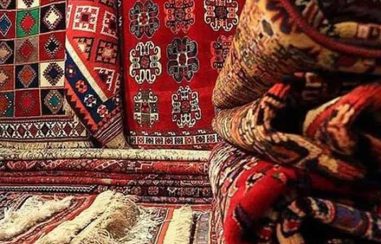The Alborz Mountain Range is located between the Central Plateau of Iran and the Caspian Sea coast, home to dozens of beautiful and unforgettable peaks. This mountain range is known as the home of the mythical Simurgh (Phoenix) and recalls thousands of legends and myths. In this article of Parsi Tours, Iranian travel agency, we first introduce the Alborz Mountain Range and its different sections, then highlight its key peaks.
Each of these mountains has its unique beauty, and selecting some peaks as key does not mean neglecting the others. The aim is to familiarize enthusiasts with a few of the main peaks of Alborz from a mountaineering perspective.
Where is the Alborz Mountain Range?
The Alborz Mountains, the main mountain range of northern Iran, stretch 560 miles (900 kilometers) long. This range forms an arc from the Azerbaijan border in the southwest of the Caspian Sea to the Khorasan region in northeastern Iran. The Alborz Mountain Range separates the Caspian region and central areas of Iran. However, the westernmost part of the Alborz Range is often called the Talesh or Bughrov Dagh. Iran’s two tallest peaks, Damavand and Alam-Kuh, are located in the Alborz Mountains.
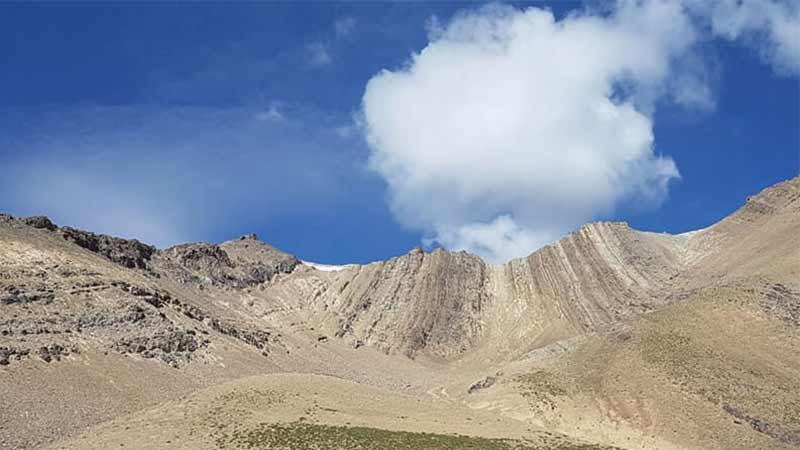
The Three Sections of the Alborz Mountain Range
Geographically, according to Britannica, Alborz is divided into three sections: western, central, and eastern.
Western Alborz
The Western Alborz Range, stretching 125 miles (200 kilometers) south to southeast, varies in width from 15 to 20 miles (24 to 32 kilometers) and consists of an asymmetric ridge with a steep slope towards the Caspian Sea. Few peaks in Western Alborz exceed 3,000 meters. In the west near the Azerbaijan border, there is a depression at 5,000 feet (1,500 meters) above sea level. The Sefid River, formed by the confluence of the Qizil Uzun (Qaysil Uzon) and Shahrud rivers, is the only river crossing the entire width of this chain. Western Alborz marks the border between Gilan Province and the Central Plateau of Iran.
Central Alborz
Central Alborz is 250 miles (400 kilometers) long, widening to 120 kilometers in the Tehran area. Important towns and settlements in Central Alborz include Kajur, Lar, Damavand, Firoozkooh, Lavasan, and others. This area includes significant peaks such as Alam-Kuh, Mount Damavand, Khaleno, and Azad Kuh.

Eastern Alborz
Eastern, or Shah-Kuh, Alborz runs about 185 miles (300 kilometers) northeast. As two ranges branch off to the south and no compensating element appears on the north side, its width reduces to less than 30 miles (48 kilometers). Except for the Shah-Kuh range (reaching a height of 12,359 feet [3,767 meters]), the elevation of the chain decreases eastward. Longitudinal valleys in the east of Shah-Kuh become less frequent. There are several passes at lower elevations.
Different Climates on Both Sides of the Alborz Mountains
The Caspian and interior or southern slopes of Alborz differ significantly in climate and vegetation. The Caspian slope has a completely humid climate, enriched with sea moisture due to northern air movements, which meets the steep mountains causing rainfall. The annual rainfall exceeds 40 inches (1,000 millimeters) in the lowlands of the Gilan region and is plentiful at higher altitudes, though it decreases towards the east. However, it remains sufficient to nourish a moist forest along the entire Caspian side of the chain, where soils are mainly brown forest type. The natural vegetation of this slope grows in specific zones: lush Hyrcanian forests at lower levels, a beech forest in the middle region, and a magnificent oak forest from 5,
500 feet (1,700 meters) to levels where gaps in the ridge allow moist air to spill into the interior basins. In some sheltered valleys, there are extensive stands of wild cypress. The protected valleys near the Sefid River are the only significant olive-growing areas in Iran.
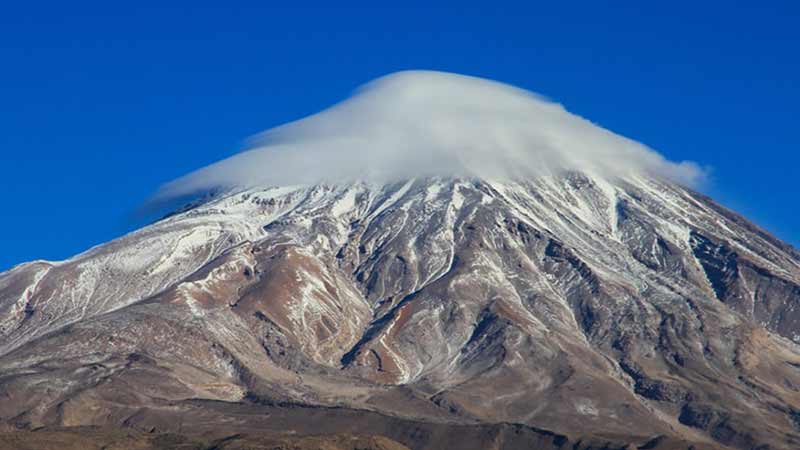
Familiarity with Key Peaks of the Alborz Mountain Range
Certainly, Damavand, as a national symbol and the tallest mountain in the country, tops the list of important peaks in Alborz. This mountain, standing at 5,609 meters, offers nearly twenty routes (including ridges and glaciers), making it an immense site for mountain climbing. The main ridges of the south, west, northeast, and north, along with glaciers like Yakhars, Do Bishe, Siule, form part of these ascent routes. Although the southern route is the easiest, it’s not necessarily the most beautiful.
Climbing Tips for Damavand
The relationship between Alam-Kuh and Damavand is somewhat like that between K2 and Everest. Everest is more famous and taller, but a mountaineer’s heart is often set on the love for K2. This comparison also applies to Alam-Kuh, which is 4,850 meters tall. Its northern face, despite the formidable wall of Alam-Kuh, forms a technical complex known as the Mecca of Iranian wall climbers.
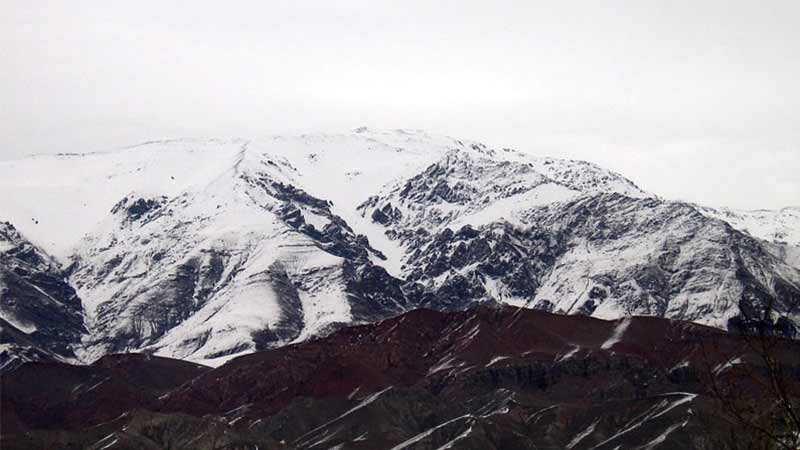
Shakhak
The Shakhak group of peaks, with a maximum height of 4,795 meters and consisting of 5 peaks, is usually less climbed than others on this list. However, it deserves a spot among the important peaks of the Alborz Range. The unique shape of its northern wall, the nature of its rocks, and the highly technical ridge between its peaks are its notable features. Climbing through loose rocks requires specific and unique techniques. The usual route to these peaks starts from the Siah Sangha shelter on the Alam-Kuh path.
Khaleno
Khaleno, the tallest peak of Central Alborz at 4,375 meters, has two summits: Small Khaleno and Big (Main) Khaleno. Unique features of this peak include the gendarme ridges along the ascent route. The beautiful nature of this path, especially in late spring, adds to the attraction of this beautiful mountain.
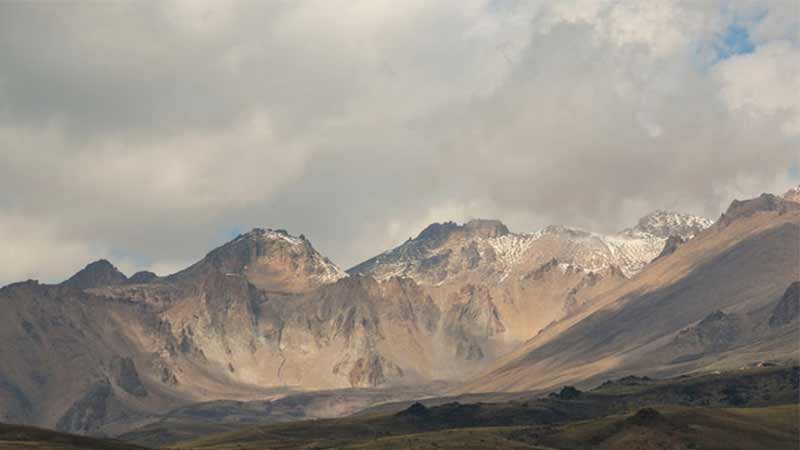
Azad Kuh
Azad Kuh, also known as the Crooked Neck Prince, standing at 4,355 meters, is located in the northern part of Central Alborz. The usual climbing route of this mountain does not involve special technical difficulties. However, the beauty of the region and the frequency of ascents make this mountain one of the important peaks of the Alborz Range. The existence of the Azad Kuh wall and its ridge on the northern side of the mountain are also significant. The usual starting point for climbing Azad Kuh is the village of Kalak.
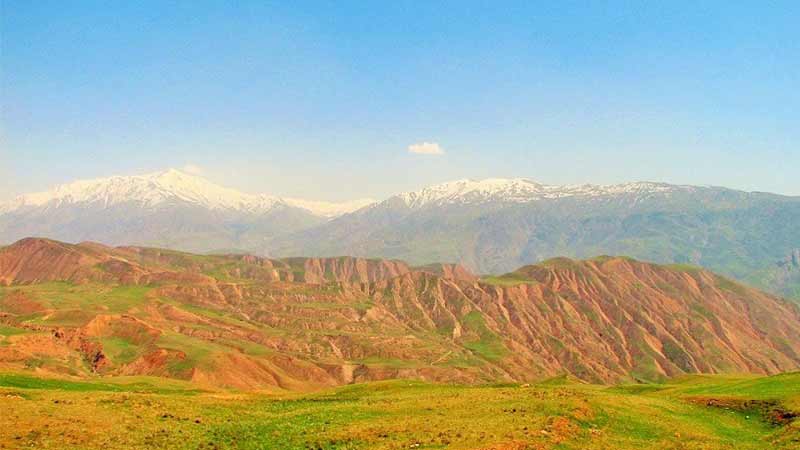
Dobrar
The Dobrar ridge is like a belt of Damavand. Climbing this ridge feels like crossing over Damavand’s belt. This complex consists of 35 peaks, the tallest being Dobrar peaks at 4,080 meters. The length of this complex is mentioned as between 60 to 70 kilometers in various sources. As an Iranian mountaineer looking for serious programs, Dobrar should not be forgotten. Technical difficulties, distance, and endurance are reasons why Dobrar is among the important peaks of the Alborz Range.
Shah Alborz
You will face a long distance to reach the beautiful peak of Shah Alborz, standing at 4,170 meters. The starting point for climbing this peak is the village of Hassan Joon Talaghan, leading through many twists and turns, crossing rivers and other obstacles towards the peak. Climbing this peak, especially in winter, has its unique challenges. The summer route is also different. It is also an attractive option for ski mountaineering in the Alborz region. The distance to the peak is about 18 kilometers, with an elevation gain of 2,200 meters.

Takht-e Soleyman
Takht-e Soleyman Peak, with an altitude of 4,659 meters, majestically rests in the Takht-e Soleyman region next to Alam-Kuh. The presence of the Patkht and Takhte Soleyman walls, the Dragon’s Tooth ridge, the high altitude of this peak, and the challenges of climbing it in different seasons are reasons to include this mountain among the important peaks of the Alborz Range. The usual climbing route for Takht-e Soleyman is via Vandarbon, Sarchal, and Alam Chal.
Tochal
Tochal Peak, despite being less than 4,000 meters tall, is among the important peaks of the Alborz Range. The reasons for this choice include the highest number of ascents, the vastness of the Tochal region, and the variety of activities it offers, such as rock climbing in Band-e Yakhchal, ridges like Darabad Tochal and Chin Kalagh Tochal. Tochal Peak, at an altitude of 3,956 meters, has 12 climbing routes, each with its unique beauty and difficulty. This place is a comprehensive school of mountaineering. In winter snowy days, this mountain is a good destination for Iran ski tours.
Conclusion
In conclusion, our journey through the Alborz Mountain Range has been nothing short of breathtaking. From the towering peaks to the serene valleys, each step of this adventure has revealed the unique beauty and rich history of Iran’s most famous mountain range. Whether you’re an avid hiker, a nature enthusiast, or simply someone looking for an escape into the wild, the Alborz Mountains offer an unforgettable experience. As we leave these majestic peaks behind, we carry with us not only memories of stunning landscapes but also a deeper appreciation for the natural wonders that our world has to offer. This trip has been a reminder of the beauty that lies in exploring and respecting our planet’s incredible ecosystems. To book Iran nature tours, do not hesitate to contact us.



